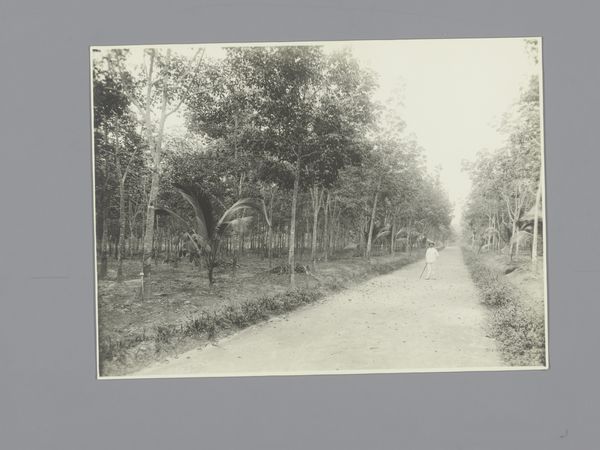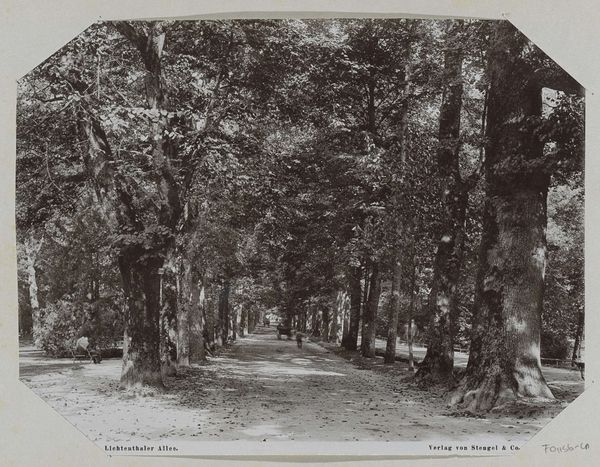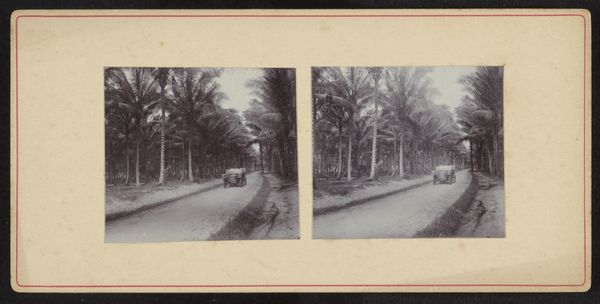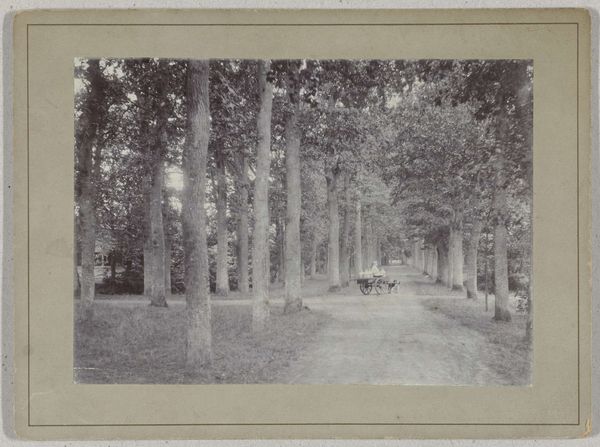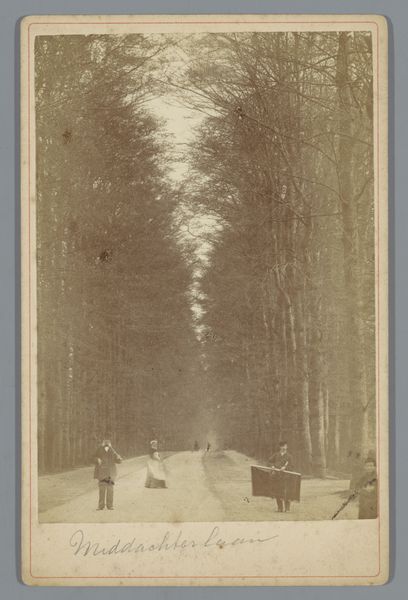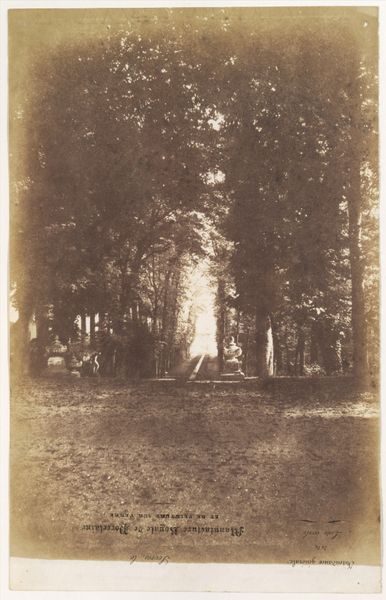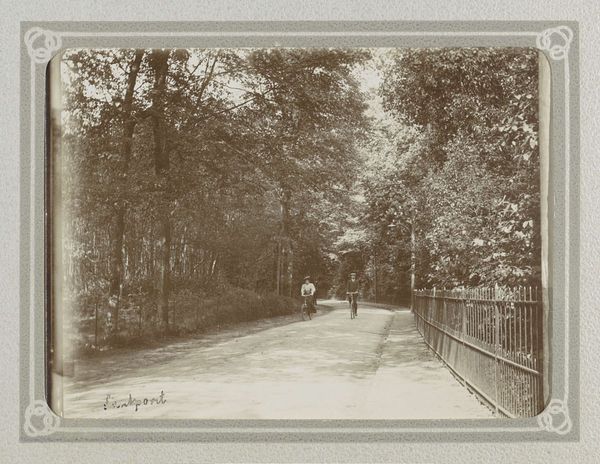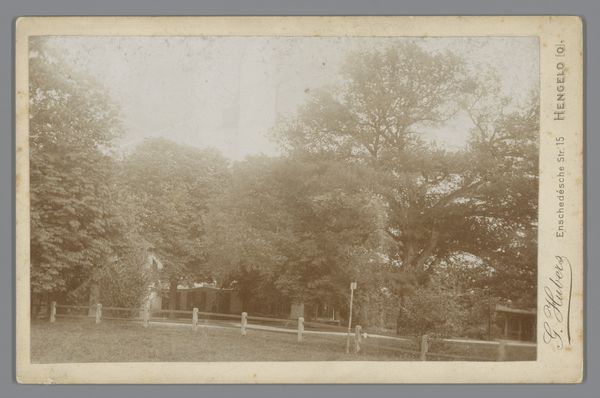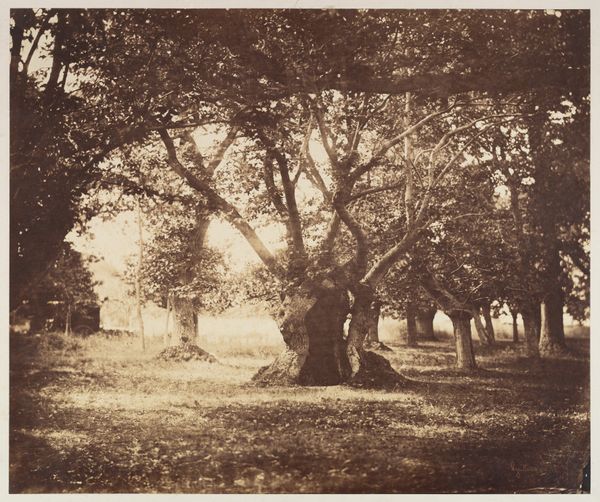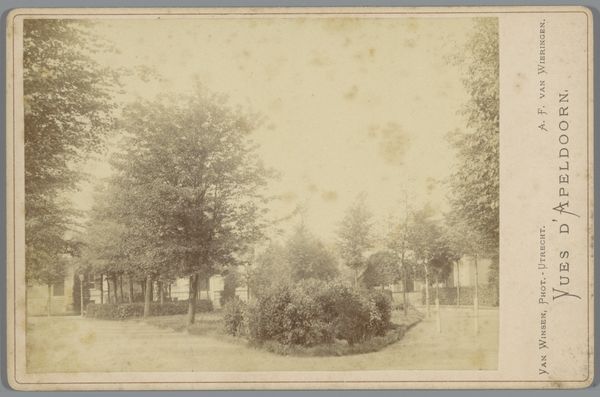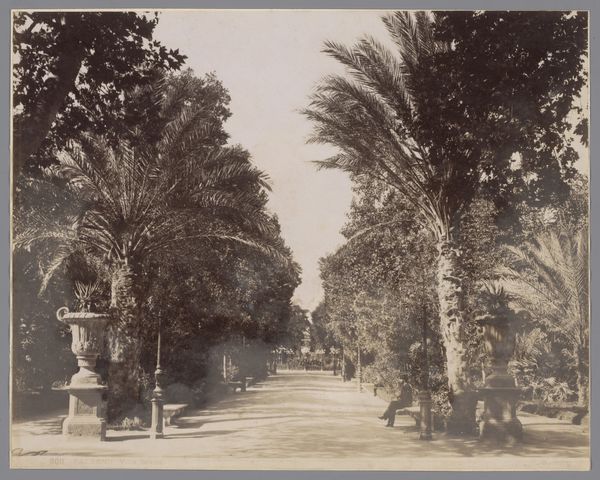
photography
#
landscape
#
street-photography
#
photography
Dimensions: height 168 mm, width 109 mm
Copyright: Rijks Museum: Open Domain
Editor: So, here we have "Bomenlaan met jongen met kruiwagen" – "Avenue of Trees with Boy and Wheelbarrow"— a photograph taken by Gerrit Hubers sometime between 1894 and 1927. It has this incredibly soft, almost hazy quality, and the composition is dominated by these towering trees lining the avenue. There's a lone figure, a boy with a wheelbarrow, adding a human element. What strikes you most about it? Curator: Immediately, I consider the labor implied in this seemingly tranquil scene. We have this young person engaged in what appears to be manual work. How does the photographic process itself become a form of labor, mirroring the boy’s effort? The materials matter: the chemicals used to develop the image, the paper it's printed on – all point to a specific industrial context, one deeply embedded in processes of extraction, manufacture, and consumption. Editor: That's an interesting perspective. I hadn't thought about the process that much! How would that context differ at that time? Curator: Consider the albumen print process that was prevalent during the late 19th century when this photo was possibly taken. Albumen, derived from egg whites, created a specific tone and allowed for mass reproduction. Who collected these images and for what purposes? How did they circulate? Perhaps this photograph participated in shaping particular ideals or narratives related to nature, childhood, and labor itself. Was this bought as decoration or a snapshot of child labour for the wealthy? Editor: So, the materiality is directly linked to consumption patterns and potential societal views about landscape and work? Curator: Exactly. We’re not just looking at a charming scene. We're engaging with the whole system of production and exchange that makes that scene visible. Consider how that informs our contemporary perception, as viewers far removed from that original materiality. Editor: That really makes me rethink how I approach photography from this era. It is not enough to simply view the artwork, you have to consider the context it came from to truly be able to appreciate it. Thanks. Curator: Indeed. Paying attention to the production process, materials, and historical setting allows for a richer engagement, it definitely is essential for interpretation of art!
Comments
No comments
Be the first to comment and join the conversation on the ultimate creative platform.
